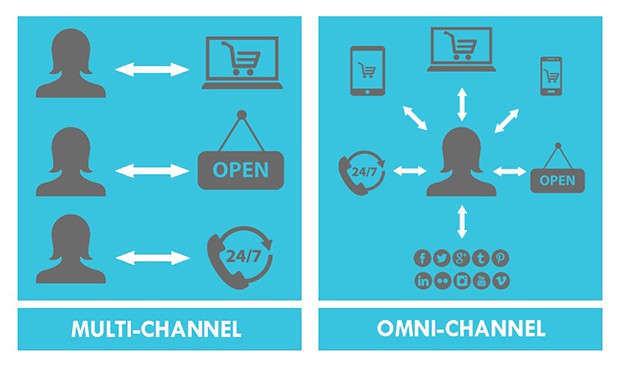In our previous post, we talked about why omnichannel mattered in marketing strategies. Now, businesses have started to hear about this new trend of omnichannel in customer care. Yet it hasn’t been that long since they employed “Multi-channel” strategies. This omnichannel strategy is being seen as the next big trend, bigger than multi-channel. What is the difference between these two terms? The words sound quite similar, but is there actually a difference in their applications?
The key to recognizing the need to move towards omnichannel from multi-channel in customer service is seeing how this process occurs through multiple channels. When a customer starts getting served in one of these multi-channels a need to switch the channels might arise. However, since there is no full connection between these channels, the customer might have to explain the problems again. This was the old “multi-channel” strategy in customer service.
In multi-channel, many individual channels are being offered to the customer for use, such as email, webchat, social media or phone calls. However, these channels are not integrated with each other. So, the customer service may not be consistent across these channels. Also, a change between devices could even impair customer experience if there are no interconnections between apps and websites.
Omni-channel refers to a customer service that has one integrated system across the multi-channel being offered. It would not be omnichannel if there is no connection between every channel offered to the customer. This means the customer can experience consistent service while using more than one of the channels or devices. Moreover, the information about the customer is stored in one system, thus the customer service assistant can reach the information independent of the channel customer is using.
Let’s Say
As an example, we can think of a customer contacting us by email; however, the solution can be more easily implemented through the phone. So, thanks to omnichannel customer service can call the customer while keeping the customer information and data on the same system.
We can think of omnichannel as a better version of multi-channel. Since the customer data and information will be on one system the transition between channels or devices will be smooth and steady.

How about the difference in the results of these two different strategies? In Omni-Channel Customer Care research, this difference shows a 91% higher yearly increase on average in customer retention in companies that employ omnichannel strategies. Also, omnichannel has helped these companies increase their customer lifetime value by 3.4% on average, while others experience a loss of 0.7% yearly in customer lifetime value.
Conclusion
Let your customers experience an integrated system on all channels and devices for customer care strategies as well as your retailing strategies. This will help them have smooth transitions across channels and still maintain the same information they are looking for. Providing customers with a better experience in customer service for your e-commerce company can increase customer retention and customer lifetime value. It might be a better choice to go omnichannel rather than just making many channels available for customers.
